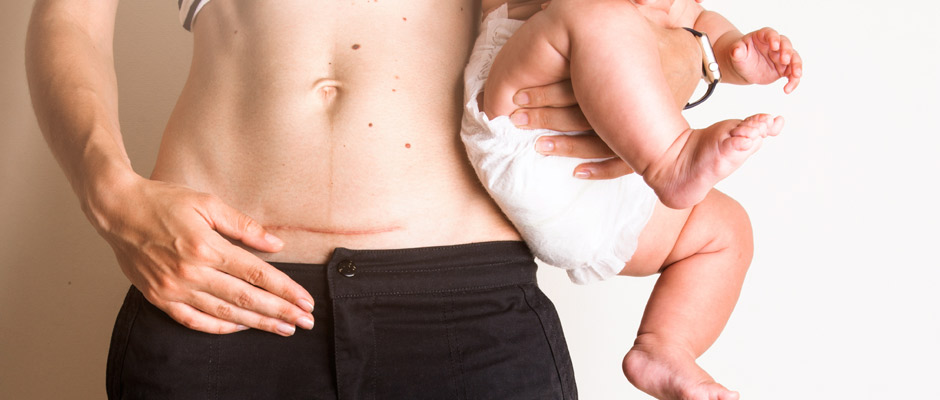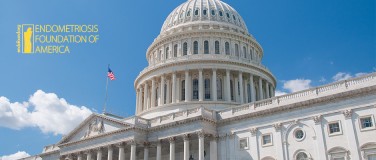
By Kimberly Lawson
It was 2014 when Adreanna Alleyne, a National Guardswoman then-stationed in Kansas, experienced pregnancy pains so severe she could hardly walk.
Considering her history of multiple miscarriages, doctors deemed her high-risk and recommended bed rest.
Still, the pain was unrelenting.
“I was like, this can’t be normal,” Alleyne tells The Blossom. “Everything about my body said something was wrong, but because it wasn’t anything physical that other people could see, no one took me seriously.”
She was used to being ignored when she raised concerns about her debilitating pain: She’d been complaining about it since she was a 9-year-old, when she started menstruating.
“It was always terrible,” says Alleyne, who’s now 29 and lives in Georgia. “I was always pulled from school [because] I couldn’t function.”
Eventually, she would learn that she had Stage IV Endometriosis. That diagnosis, however, wouldn’t come until two years after her difficult pregnancy.
Alleyne went into labor at 36 weeks. She says she initially didn’t feel any contractions, and her doctors told her there was no amniotic fluid (the liquid that surrounds and protects the fetus) in her womb. After more than 14 hours of labor, she was taken into surgery for an emergency cesarean section. Her medical team couldn’t find her baby’s heartbeat.
“They rushed me in, and five minutes later, my son was born,” Alleyne says. The procedure, however, ended up lasting seven hours. The military doctors believed she had an infection. It turned out that what they were actually seeing were the adhesions from her endometriosis.
But Alleyne didn’t know that then.
“I just accepted [the C-section] as just part of the journey I had to go through to get my child here safely.”
Had she learned her endo diagnosis before her pregnancy, she says she might have made different decisions around her birth plan. “Having endometriosis was a big factor [that] played heavily on my pregnancy, labor and ultimately my C-section.”
Double the C-section rate, and double the risk
Many health organizations recommend C-sections be reserved for medically necessary situations, because of the risk of severe, permanent complications and even death. Certainly, these abdominal surgeries have saved the lives of countless babies and mothers around the world. In the United States, however, the procedure has become routine: nearly 32 percent of all babies are delivered by C-section, according to the Centers for Disease Control. According to the World Health Organization, the ideal rate should be no higher than 10-15 percent. Data from the American College of Obstetricians and Gynecologists shows more women in the U.S. die after C-sections than they do after vaginal deliveries.
“Some of these complications affect the mother, such as hypertensive disease of pregnancy and gestational diabetes; while some affect the baby, such as preterm birth and small for gestational age. All of these conditions are known to be risk factors for cesarean section."
Despite those sobering statistics, research shows that pregnant women with endometriosis are more at risk to deliver by C-section. The authors of a review published in Human Reproduction last month found 20 studies that examined the relationship between endometriosis and C-section; in total, the research included more than three million women. Researchers discovered that the odds of an endo woman undergoing a C-section were nearly double when compared to patients without endo.
“Though we are not completely sure why we see this relationship between endometriosis and cesarean section, there is much evidence to suggest that women with endometriosis are at higher risk of various pregnancy complications, which in turn may lead to cesarean birth,” says Dr. Innie Chen, an assistant professor of general obstetrics and gynecology at the University of Ottawa and one of the authors on the meta-analysis.
RELATED: Getting Pregnant With Endo: What You Need to Know
Yet another endo-related worry? It’s rare, but it is possible for endometrial tissue to grow into the scar tissue at the incision site of a C-section.
It’s unclear, says Chen, whether treating endo prior to pregnancy would help prevent the development of such complications and decrease the need for a C-section. There’s just not enough research yet to say for sure.
“Some of these complications affect the mother, such as hypertensive disease of pregnancy and gestational diabetes; while some affect the baby, such as preterm birth and small for gestational age. All of these conditions are known to be risk factors for cesarean section. Further, pregnant women with endometriosis are three times more likely to have placenta previa, a less common condition that occurs when the placenta is covering the cervix, for which a cesarean section is needed.”
According to a January study published in Fertility and Sterility, researchers found that women with surgically-diagnosed endometriosis were twice as likely to be at risk for placenta previa.
That was the case for Ana Roldán, who lives in Madrid, Spain. She was diagnosed via laparoscopy with Stage IV Endometriosis in 2015. She tells The Blossom that her fallopian tubes were removed, and her doctors discovered a frozen pelvis, “kissing ovaries” (when the ovaries balloon with endometriomas and nearly touch each other) behind her uterus, and a mass in her rectovaginal area.
But almost two years later, Roldán became pregnant. At 20 weeks, she was diagnosed with placenta previa. “The placenta was inserted in the back wall of my womb, but it covered a big part of my cervix,” she says, “so there was a big risk of hemorrhaging if I started with contractions.”
When Roldán reached 37 weeks, she went in for a C-section. The surgery went well, and her baby boy was delivered without any issues.
Defying the odds
Still, despite what studies have shown, there are women with endometriosis who manage to conceive and vaginally deliver. After The Endometriosis Foundation of America asked such women, via social media, to share their stories with us, more than two dozen women contacted us to share their birth story.
"There was a discussion about it, and they had mentioned it's possible it may be harder because of scar tissue or whatever, but being a nurse, I was like, 'Hell, no. I'm going to try for vaginal [birth] no matter what it takes.'"
Katrin Niebur is one. After being diagnosed with Stage IV Endometriosis in 2007, Niebur, now 38, went on to have three girls, ages 9, 7, and 4, welcoming all with a vaginal birth. "I was never worried [about having a natural birth]," she tells The Blossom. Neither did her two obstetricians, she adds, one of whom performed two of her endo surgeries. "I think I would've been more concerned about recovery from C-section regardless of whether I had endo or not."
Jessica Milone is another. She welcomed two girls, now 5 and 2, after her 2011 Stage IV Endometriosis diagnosis. After a six-hour-long excision surgery, she woke up to learn she narrowly avoided losing her kidney and that the disease had blanketed her rectum. When Milone conceived about a year later at age 25, her doctor expressed doubts about whether or not she'd be able to deliver naturally.
"There was a discussion about it, and they had mentioned it's possible it may be harder because of scar tissue or whatever, but being a nurse, I was like, 'Hell, no. I'm going to try for vaginal [birth] no matter what it takes.'"
Milone did. But that wasn't the end of her encountering pressure to have a C-section.
When she arrived at the hospital to deliver, her labor stalled and lasted 30 hours. "They were telling me like, 'Okay, we're getting that point where we're going to have to force you to have a C-section.' I was like, 'No.' I went through a lot of walking. They let me try other techniques, and then I finally gave birth vaginally."
And Milone, now 31, plans to do it all again—now that she's expecting twins. Which, she proudly adds, were naturally conceived.
"I don't want a C-section. I've seen people go through it, and I'm like, 'No, I don't want that.'"









